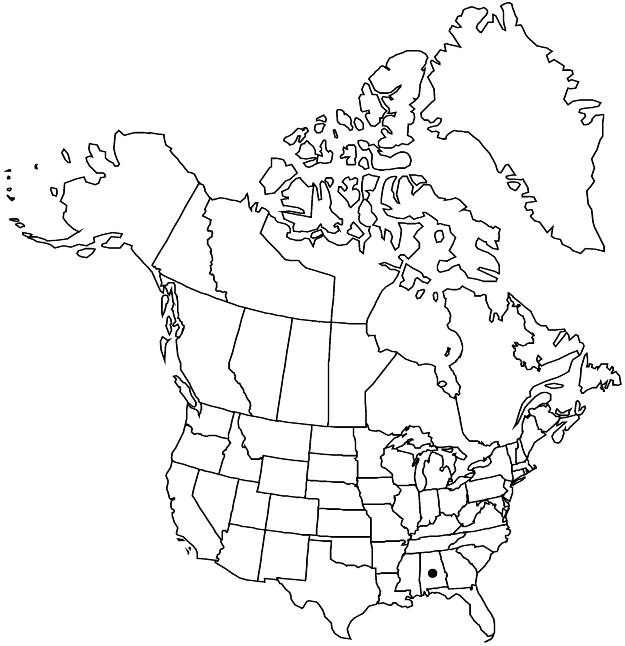Crataegus annosa
Biltmore Bot. Stud. 1: 83. 1902.
Trees, 80 dm. Stems: trunk bark dark, rimose; twigs not recorded; thorns on twigs ± straight, 1-year old chestnut-brown or gray, slender, 2–3 cm. Leaves: petiole slender, length 25–50% blade, pubescent (at least young), sessile-glandular; blade rhombic-elliptic to obovate or obtrullate, 2–4 cm, texture and base not recorded, lobes small across apical part, sinuses, lobe apex, and margins not recorded, veins 2 or 3 per side extension shoots with 3–4 pairs, apex not recorded, surfaces sparsely pubescent. Inflorescences 3–5-flowered; branches densely pubescent; bracteoles not recorded. Flowers 15–20 mm diam.; hypanthium pubescent; sepals 3–4.5 mm, margins glandular-serrate; stamens 20, anthers ivory; styles 3–5. Pomes reddish orange to yellow, washed red, suborbicular to broadly ellipsoid, 10–12 mm diam., pubescence not recorded; sepals reflexed; pyrenes 3–5.
Phenology: Flowering Apr; fruiting Sep.
Habitat: Brush
Elevation: 50 m
Discussion
Crataegus annosa is typical for ser. Apricae in foliage and fruit, but in anther number and color, and in the narrower short-shoot leaves, it is typical of ser. Lacrimatae. It is known only from syntype specimens and is only doubtfully placed in ser. Apricae.
Selected References
None.
Lower Taxa
"thin" is not a number."pubescent" is not a number."adnate" is not a number."dm" is not declared as a valid unit of measurement for this property.
